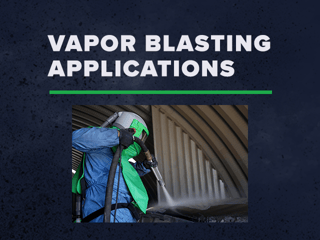
What is Vapor Blasting?
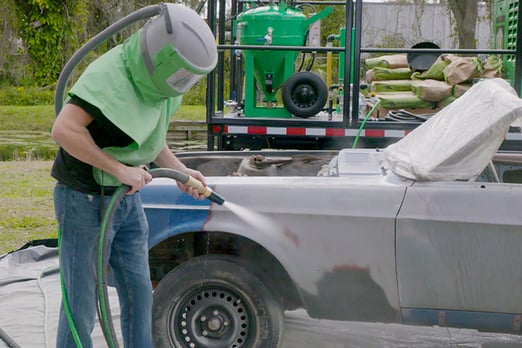
Vapor blasting, also known as vapor honing, is a process that uses abrasive media and water inside a pressurized wet blasting pot to remove coatings while simultaneously cleaning and prepping a surface. Wet blasters, like Dustless Blasting equipment, are used for a variety of applications that we will discuss below.
Practical Applications and uses for Vapor Blasting
Eliminate contaminants from a variety of surfaces with ease. Vapor blasting offers the ability to use different abrasive materials while adjusting the blast pressure, making it the ultimate solution for all your blasting needs. From automobile restoration to industrial equipment refurbishing, below is a curated list of vapor blasting's diverse applications and uses.
Automotive Restoration 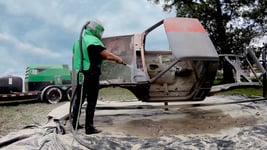
Remove paint, primer, rust, and body filler in just one step. When wet blasting, water acts as a cooling agent that reduces friction and heat, which are normally responsible for warping body panels when sandblasting. Abrasive vapor blasting equipment, like Dustless Blasting, uses abrasives to create a surface profile, leaving the surface primer-ready.
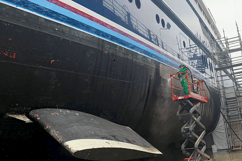 Marine Maintenance
Marine Maintenance
Reveal blister damage, suppress dust and easily contain marine projects with a powerful vapor blasting machine. From fiberglass boats to small aluminum substrates, Dustless Blasting equipment can restore any marine project.
Concrete resurfacing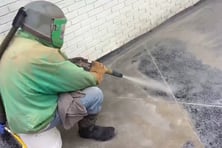
Remove tough surface stains, grime, paint and sealers from concrete with a practically dust free process. Vapor blasting should always be used on concrete surfaces as they contain silica sand in the mixture and can be hazardous to inhale while dry blasting.
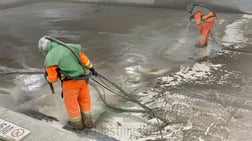 Pool Restoration
Pool Restoration
Easily remove paint and plaster from pools or adjust your pressure settings and media to gently clean calcium deposits from pool tiles with a vapor blaster.
Powder Coat Removal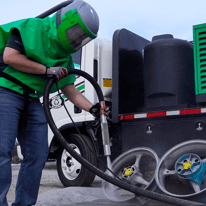
Vapor blasting cools the powder coat, making it brittle and easier to remove than heat-based removal methods that make the coating gooey.
Below are a few other slurry blasting applications worth mentioning:
-
Epoxy Removal
-
Remove paint from: cars, concrete, pools, wood, brick, stone, heavy machinery, softer metals, boats, aluminum parts, antiques, fire hydrants and so much more.
-
Remove other contaminants like: grime, mold, grease, corrosion, dirt and calcium from a variety of surfaces.
Reasons to Vapor Blast
There are many factors that go into why an operator should vapor blast as opposed to dry blast. Take a look at the list below to see if wet blasting is the best process for your upcoming job.
Needing a Dust Free Process
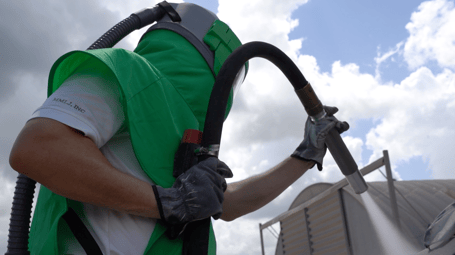
One of the best benefits of using wet blasting equipment is that it reduces the hazardous dust created with traditional sandblasting by 95%. This is because water encapsulates the abrasive particles, causing it to fall directly to the ground instead of being airborne. OSHA recommends vapor blasting on jobs where others will be nearby.
Environmental concerns
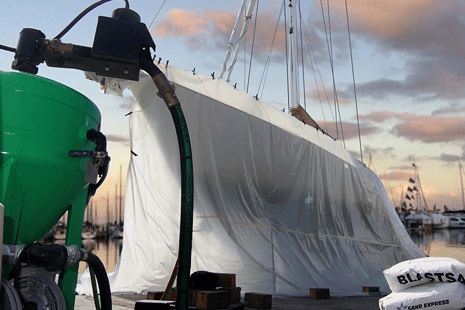
Wet blasting is the environmentally friendly alternative to sandblasting as it can be easily contained - preventing airborne particles from harming pristine locations and vegetation. Most marinas will only allow the vapor blasting process on dry docks in order to prevent dust plumes from spreading over various bodies of water. With wet blasting, operators can easily contain a project and keep the debris at bay.
Heat Reduction
Dry blasting causes significant heat generation on the substrate caused by friction which can cause problems. With wet blasting, water in the slurry mixture keeps the blasted surface cool, which helps to prevent thin metals from warping, weak substrates from cracking, and heat-reactive coatings from melting.
You're removing extremely tough coatings
At the same blast pressure, vapor blasting or wet blasting equipment will outperform dry blasting equipment due to their inclusion of water. Water not only helps to suppress dust and debris, but it also adds weight to the media, thereby enabling it to strike the substrate with greater force.
You need to simultaneously clean the surface
While dry blasting can remove coatings from a variety of surfaces, it doesn't act as a cleaning solution like vapor blasting does. If you know the surface needs to be cleaned, vapor blasting is an all-in-one process that will save time.
Vapor Blasting Equipment
Vapor blasters work by using compressed air to deliver a slurry mixture composed of water and abrasive media to the blast hose and out of the blast nozzle onto a surface needing to be restored or cleaned. There are many different types of vapor blasting equipment that all operate differently below:
-
Dustless Blasting Machines (Venturi Method): the number one choice for abrasive blasting - wet or dry.
-
Vapor Honing Technologies (Gravity Fed)
-
Slurry Blasting
-
Vapor Blasting Cabinet
For additional information on these wet blasting machines and their differences, view this article.
Vapor Blasting FAQs
WILL VAPOR BLASTING CREATE RUST?
The blasting process, wet or dry, can create rust. Obviously, the introduction of water allows for a chemical reaction that creates rust. To combat that reaction from occurring, Rust Inhibitor is used with the water/abrasive mixture during wet blasting and as a rinse with treated water afterwards to actually clean and remove grease and chlorides from the surface.
When dry blasting, there is no water to promote cleaning and the substrate will actually have embedded blasting particles left behind. This could create a future coating failure due to the contaminants not being properly washed away. To combat rust from forming when dry blasting, simply rinse the material with Rust Inhibitor treated water after blasting.
VAPOR Blasting Media
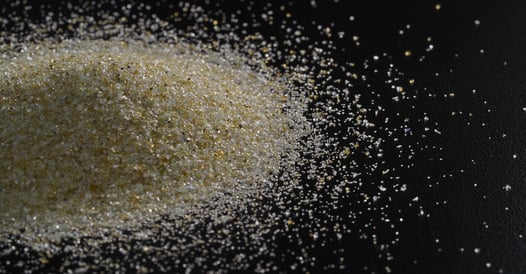
Vapor blasting machines do require the use of a specific type of blast media. The most important factor is that the media must sink in water. Please read this article for more on what types of media you can vapor blast with.
Safety tips for Abrasive Blasting
Even though vapor blasting is a process that reduces dust, there are still safety precautions operators should take that are listed below:
-
Hearing protection
-
Eye protection
-
Leather gloves that protect to full forearm
-
Safety shoes or boots
-
An abrasive blasting respirator when using hazardous abrasives or removing certain coatings.
What Additional Tools Do I Need For Wet Blasting?
Every wet blaster should have the proper tools while out on the job. Here are a few items that will help make your life easier whether you're dry or wet blasting.
Abrasive Blast Nozzles
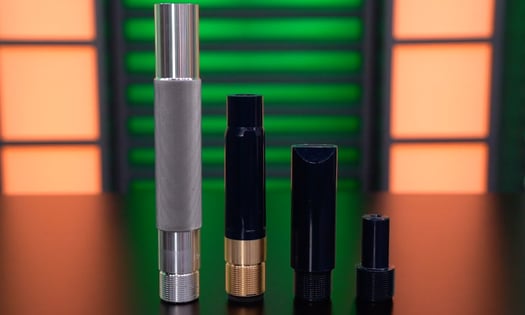
An assortment of nozzles. Selecting the right nozzle is crucial for getting optimal results because each one has a different purpose and blast pattern. But not only that, every vapor blasting equipment requires a certain size nozzle depending on your air compressor.
Other Tools
Extra Blast Hose
Power brooms for cleaning up after the job.
Bagsters can contain up to 3,300 lbs of spent media or waste. This is a must-have for cleaning up once the job is done. Simply dump your spent media into the bag and pay to have it properly disposed of.
Do Dustless Blasting machines warp metal?
This wet abrasive blasting technology uses water to reduce heat which prevents warping metal. However, it is crucial to hit the surface at an appropriate standoff distance and at an angle rather than straight on, so you peel the coating off rather than pounding it in. A 30 to 40 degree angle is good.
VAPOR BLASTING VS DRY BLASTING VS SODA BLASTING
When choosing the best equipment for the job, it's important to consider the surface, coating and required finish. In some cases, vapor blasting will be the desired method and in other's you'll want to dry blast. The main difference between dry and wet blasting is that wet blasting uses water inside the machine. Learn why this matters and how it effects the blasting process in this article.
For more on vapor blasting, make sure to read our Vapor Blasting complete guide below. All Dustless Blasting machines can be found here.

